ID Card Printing Blog

September 21 2012 |
Badge Accessories
Badge accessories may seem like minor details, but they are actually an excellent way to present your company ID, membership or event credentials, and they will set your company apart from the crowd. It’s only a matter of how you wear you badge. Normally, badges come attached with a variety of badge and attachment accessories. People tend to pay more attention to the details of the badges rather than on the badges themselves. At ID Security Online, we carry a wide range inventory of badge accessories in stock from badge holders, badge clips, badge reels to lanyards. Our line of accessories not only displays your ID but they also serve as a protection to your badges as well. Available in different colors and materials, you can attach your badge to your clothing with our badge accessories. Moreover, we offer free service to printing logos on your badge. You can use the logo to print on badges, name tags or promotional gear.
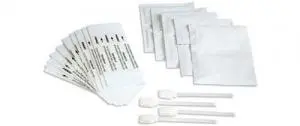
September 09 2012 |
Cleaning Kits for ID Card Printers
Cleaning kits are a critical component of any ID card program. Regular printer cleanings are crucial for maintaining and extending the life of your ID card printer. ID card printers are vulnerable for collecting dust from the ID cards. As the ID card goes through the printer they leave dust and debris that can potentially damage your printhead thus resulting ID cards with lower quality images then it would normally print. With routine cleanings and replacement of cleaning rollers, you can expect optimal image quality and a longer life for your card printer. ID card printers should be cleaned and covered when not in use. You should clean your printer every time you change your printer ribbon. Every card printer requires certain cleaning products to be used as preventive or corrective maintenance. At ID Security Online, we provide cleaning kits designed for specific ID card printers.
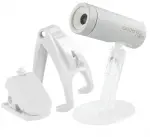
August 28 2012 |
Photo ID Camera
Photo ID cameras are generally used for printing out passport style pictures suitable for your ID card. Many organizations, companies, facilities, educational institutions, medical facilities, and government offices use these cameras as an integral component to the photo ID system. A photo id requires the visual representation of the card holder on the card. There are a number of options to obtain the necessary picture to place on the current PVC card standard of today.
August 24 2012 |
Photo ID System and Supplies
A photo ID system is an integral component of creating an effective ID program. In our modern high tech world, photo ID cards are found far and wide with many different uses. Driver's licenses or passports are no longer the main focus for photo ID. With the sophistication and convenience of a photo ID system, companies are able to easily integrate photo ID into their organizations and enjoy the benefits they have to offer.
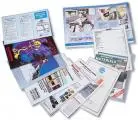
August 21 2012 |
ID Badges
ID badges, similar to ID cards, are used for identification purposes. Most companies, corporations, organizations, and government offices across the globe use ID cards as means to identifying their employees or citizens. ID badges are commonly worn by hospital staff, government officials, and security agents. ID badges help them cultivate a more professional, detail-oriented image for their company or organization.
August 12 2012 |
Zebra ZXP Series 8 Industries and Applications
This retransfer card printer offers picturesque image quality, best-in-class throughput, a multitude of encoder options, and high reliability that minimizes maintenance. The ZXP Series 8 Printer includes ZMotif™ software development tools for easy integration with enterprise applications. Using innovative retransfer printing technology, the Zebra ZXP Series 8 delivers superior print resolution at the fastest speeds in its class for high-quality photo ID cards with images and graphics that look more like glossy magazine prints than ordinary ID photos. The printer’s modular design provides flexibility to add a variety of encoding options as needed.
Single or dual sided lamination is also available. This retransfer printer is ideal for printing on uneven card surfaces, such as smart cards, or for when the application calls for very high image quality or cards that are more durable and abrasion resistant.
August 05 2012 |
Single and Dual sided ID Cards Printers
Difference between a single-sided ID card printer and a dual-sided ID card printer?
A double sided printer will print on both sides of the ID card whereas a single sided printer will only print on one side of the ID card. A single sided printer is necessary for creating ID cards with limited cardholder information. It has a full color and monochrome printing capability. It offers magnetic stripe and smart card encoding options. You can choose direct-to-card or a stunning reverse transfer print technology. Printing ID cards from a single sided printer can be time consuming. Most card printer manufactures discourage the use of a single sided printer primarily that this printer tends to damage the sensitive print heads in the print cards.
August 05 2012 |
Laminate Photo ID Cards
Why would I need to laminate my photo ID cards?
Firstly, what is a laminated card? A laminated card is a full color plastic card with Matt or Gloss lamination. Matt lamination is a thin coating on a card used to smooth out the printings on the card. This coating provides a soft and silky satin sheen high quality finish resulting in a more sophisticated card. It also allows the card to be more water resistant. It also extends the durability of your card. Gloss lamination forms a protective coating over the print which makes it suitable for items such as menus, cards, brochures etc. Gloss lamination also gives your card a more professional look. These type of plastic cards are used for advertising a business, product, or a service. Lamination serves as a protection for your card. This process is beneficial to the cardholder that it prevents the fading and dye migration via sun exposure on your card. That way, you won't have to reprint your card frequently thus saving you supply costs and time. Holographic lamination increases the security of your cards therefore preventing identity theft or unauthorized duplication of your card. How are laminated cards produced? Multiple cards must be printed on a large sheet. Then they are fed through a laminating unit which provides a thin sheet of laminate either on both or one side of the card. This procedure traps the card in between. Heat is then applied to seal the lamination.
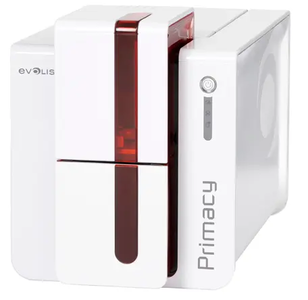
July 22 2012 |
Announcing the Arrival of the Evolis Primacy!
ID Security Online is proud to
announce the arrival of the Evolis Primacy ID card printer!
The Primacy is an easy-to-use high-end printer and the ideal
solution for identification badges, payment cards, student cards and
transportation passes. Available in blue and red, single or double-sided and
with or without encoding technologies, the Primacy comes with USB and Ethernet
TCP/IP connectivity and boasts a pioneering 3-year manufacturer's warranty.
The Evolis Primacy prints a maximum of 210 cph (cards per
hour) in color and 850 cph in monochrome, includes a 250-card capacity color
ribbon cassette and has a 100-card capacity feeder and output hopper.
Further, the Primacy is user friendly, allowing the user to
check the amount of cards in the printer so that you can load more into the
front panel before the printing ends. It as well highly modular, allowing you
to install encoding options via the Evolis website.
And for the green thumbs, Evolis Primacy has received ENERGY STAR certification, complies with ErP directives and consumes an average of 5 times less than earlier printers.
July 15 2012 |
Finding Supplies Made Easy
At ID Security Online our goal
is to make it easy for you to
search through our database. Let’s face it, we’ve designed it so we know
where
everything is, and in order to allow you to find what you need quickly
and
easily we’ve added website tools to make it that much easier to find
what you’re
looking for.
You can search for supplies in one of four convenient ways.

July 05 2012 |
ID Card Printer Cleaning Kits

June 24 2012 |
Scratch-off Ribbons
Scratch-off ribbons are ribbons specifically designed to create a thin, removable layer of material on a card that a user can scratch off to reveal hidden information, such as PIN numbers, passwords or barcodes. Therefore some particular uses of scratch-off technology include membership cards, prepaid phone calling cards, bank cards and any cards with private information.
Scratch-off ribbons are monochrome ribbons are typically grey ribbons interwoven with black lines arranged in a wave-like pattern. Scratch-off ribbons that produce variously-colored layers do exist, but the majority of them are grey.
When using the scratch-off feature the ribbon driver needs to be selected to “K,” which represents “black” in YMCKO (yellow, magenta, cyan, black, overlay). You can achieve best results by using the scratch-off ribbon as a monochrome ribbon with the contrast setting placed at C3.
Scratch-off ribbon technology is compatible with PVC cards and a variety of monochrome ribbons and hologram cards.

June 14 2012 |
What are Duplex Printers and what are they Good For?
Duplex ID Card Printers, also commonly referred to as Dual-sided printers, are, as the name suggests, printers that are capable of printing images and text on both sides of a surface, usually of a piece of paper or plastic ID card.
Generally speaking there are two methods of duplex printing — a) printers which automatically flip over a piece of paper and print on the other side, and b) printers, usually high-volume printers designed with two engines, that print on both sides of the sheet of paper as once as it is feeds through the machine.

May 30 2012 |
ID card systems reduce school clutter
One of the keys to smooth running in a school is getting students into the building and to their classes in an easy, quick and if possible, comfortable manner. Add in hallway traffic congestion and social chattering factors and you quickly be left with traffic jams. The good news is that the merger of ID card systems and system software can easily reduce hallway, lunchroom and library clutter.
For example, various process take place in a typical school on any given day, such as signing for lunch programs and purchasing lunches, checking out library books, attending schooling events and other annual events, such as buying year books.
Integrating ID card systems with good ID card software programs is an optimal way to streamline school-related processes and to ensure reduced stress and increased student body flow. By issuing student ID cards laden with embedded mag-stripe encoding or barcodes, students can easily pass their cards through a scanner when signing up for lunch programs, purchasing food or checking out library books.
Aside from moving along these processes in a more efficient manner, students will potentially appreciate the efficiency of being able to wear their ID’s - making it harder to lose, and thus safer with regards to identify theft. Such cards can also be used to issue students lower bus fares, a policy adopted by both private and public schools in Baltimore Country and Baltimore City.

May 28 2012 |
Access Control for Schools
While statistics seem to show that the national crime rate
has fortunately dropped in the last few years, other studies, such as the U.S.
Department of Education’s and the U.S. Department of Justice’s 2006 Indicators of School
Crime and Safety study, indicate that violent crime has risen specifically
among children and adolescents.
Such unfortunate incidents require renewed professionalism
and vigilance with regards to school safety and the integration of appropriate
methods. School administration, staff and the parent body should rightfully vie
for technological integration of visitor management and access control systems.
Such systems are typically used for restricting, recording
and monitoring access into and departure from a school building. Student-issued ID cards can be synchronized with access control systems, most of which include
or are compatible with software programs, such as the one seen here, designed for tracking visitors,
recording data and compiling it into reports. The main purpose of the hybrid
between existing ID card and access control systems is to help school security
and staff to more easily recognize who belongs and doesn’t belong on the school
grounds.
Access Control — Access control can refer to a single
entrance or to multiple entrances into the building. Such systems can be
integrated into as many entrances as necessary.
Visitor Management Software — The school can also use
software systems ideal for compiling detailed reports describing data, such as
visitor frequency, entrance and exit, and most-commonly used entrances. Such data
can help staff identify and learn about any potential problems related to
violence on campus.
Expiring Badges — Expiring badges are visitor badges with a predetermined “lifespan” and are typically issued to guest speakers or other persons for temporary access to the facility. Such badges are generally effective for one day only or a half-day.
May 21 2012 |
Alternative Ways to Use ID Card Printing for Marketing Purposes
A high number of industries and fields utilize plastic card-printing
technology for an equally high number of purposes. Government buildings and
corporations print on plastic ID badges for access control and visitor management, schools use them as
identity cards for their staff and student body, and financial institutions use
them for credit cards.
However, this blog post will cover other, more out-of-the-box
ways that a standard ID card printer can be used for marketing purposes and to
promote your product.
Wide varieties of theme-specific information can be
incorporated onto a wallet-sized card. For example, if you run a construction
company or any business that involves calculating measurement conversions, such
as carpet sales, you can sell cards with unit conversion information printed on
them. 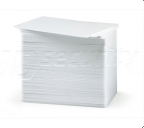 These can come in handy for customers who buy your products and need to
quickly convert units when placing rugs in their homes or workplace. Other
industries that can benefit from unit-conversion cards are bakeries, which
often require quick conversions for recipes.
These can come in handy for customers who buy your products and need to
quickly convert units when placing rugs in their homes or workplace. Other
industries that can benefit from unit-conversion cards are bakeries, which
often require quick conversions for recipes.
Public safety institutions, such as police and fire fighting
stations, hospitals and schools can print cards displaying emergency
information numbers and addresses on the front on back using dual-sided
printers.
And who says that business cards need to be limited to being
printed on paper cards? Plastic ID cards can contain all the information that a
traditional paper business card displays, but are more durable. This can as
well include restaurants with hours of operation, web site address to view a
menu, and phone number for delivery.
Coupons as well can be printed on plastic cards versus the standard
paper, which can be torn. Further, such cards can be programmed to be used
repeatedly.
Thinking outside of the box when it comes to alternative printer uses can help you advance your marketing strategy, and the technology already exists!

April 29 2012 |
Retransfer Card Printers
Retransfer Card Printers, such as the ZebraZXP Series 8 are printers that use heat and pressure in order to create a permanent image on a surface. In contrast to regular printers, which are used primarily for variant paper surfaces, retransfer printers are also used to print images on plastic surfaces, such as CD’s, although ID cards are among the most popular items that utilize retransfer printing.
How does Retransfer Printing Work?
Retransfer printing utilizes a two-step process. The first step is to print the image backwards onto the underside, or substrate, of a thin, transparent retransfer film. The second step is to place this film onto the item being printed on and to create an irremovable and identical image on the surface of the ID card or CD. Retransfer printing as well allows you to print images on a variety of variously shaped surfaces, such as smart cards.
No White Border around Image
Standard DTC, or direct-to-card printing, unavoidably creates a small white border of approximately 1/32nd of an inch around the perimeter of the card. While in some cases this border is desired, in some cases an image that is precisely flush with the edge of the card is preferred. Retransfer printing technology allows for the creation of images that extend to the end of the card. In order to accomplish this, the retransfer film must be slightly larger than the surface being printed on, such as the industry CR-80 PVC ID card.
Lifespan
There is another notable difference between retransfer printing and DTC printing. DTC printing requires that the printhead comes into continual contact with surface, on the order of thousands of cards per month, which gradually wears it down. The retransfer process extends the printhead lifespan by printing the image on the flimsy laminate film instead, thereby avoiding the wear-and-tear that occurs during DTC printing.

February 12 2012 |
What is a Printer Ribbon?
A printer ribbon is the part of the printer that administers the image onto the surface being printed on and there are two main types of ribbons: color and monochrome.
December 25 2011 |
The Usefulness of Customer Loyalty Cards
For most business, having a customer come in once simply isn’t enough. Any business savvy person will tell you that the key to running a successful company is in the amount of customers you have alone, but in the willingness of those customers to come back to you time after time and not go to your competitors for the same, or similar, products. But how do you acquire an efficient network of loyal customers? Unless they are given some sort of incentive, most costumers won’t give a second thought before going to a different company if it’s more convenient for them. Customer loyalty cards are a great way to give your company the extra edge that will drive clients away from the doors of your competition in favor of doing business with you. Best of all, you can design and print these cards right from your office. Here are just some key benefits to take into consideration when deciding if taking the initiative to print customer loyalty cards will help your business:
- First time buyers will be more inclined to return to you after their initial purchase- Giving your clients a discount or establishing a rewards system makes it more financially logical for your customers to return to you.
- Get customers to remember you- Many customers tend to forget contact information for a business they seldom work with or have visited just once. A customer loyalty card with your businesses’ contact information can double as a more durable business card.
- Returning customers will be encouraged to spend more than they normally would- If your company offers a rewards system through the use of loyalty cards, customers will be inclined to spend more with the goal of attaining those rewards.
- Improve your inventory- customer loyalty cards can give you a better sense of what products your customers are buying. This provides you with useful data when it comes to deciding which product you need to stock up on more and which to cut back on.
If you already own an ID badge printer, you don’t even have to purchase any additional supplies. ID badge printers, like the HDP5000 from Fargo, can be used to printer your very own customer loyalty badges right from your office! If you believe your business would benefit from customer loyalty cards, or simply want to find out more about how to begin implementing a customer loyalty card program for your business, give us a call at 800-897-7024.
December 18 2011 |
What is ID Card Software?
ID card software is any software that provides secure identification, barcode and asset tracking and visitor management. The following post gives a brief overview of each of the basic elements central to an ID card software program.
Secure Identification
Secure identification is the bread and butter of ID card software and is the process by which professional-looking and good quality ID cards are created. These cards, which are created for and issued to a building visitor upon entrance, are typically printed on the spot and can be used for a variety of purposes, such as corporate and student ID cards, government credentials and driver’s licenses. Identification badges usually display the picture of the individual on the front and function either through a barcode printed on the front or back of the card, through a magnetic strip embedded alongside the back of the card (as with a credit card), or through biometrics, which is the recording of biological characteristics such as fingerprints or DNA.
Barcode and Asset Tracking
An asset is defined as any permanent piece of equipment or item used by a business on a regular and fixed basis. Assets can generally be split into two categories: tangible and non-tangible. Thus, computers, phones, desks, hardware, computer files and data are all considered assets and a company must be able to track them on a regular basis.
Asset tracking is integrally related to asset protection, or
retail loss prevention, which is an investigative method into the occurrence of
workplace theft. According to the 2006 National Retail Security Survey, company
losses and their percentages are split into 5 main categories: 46.8% from employee theft, 31.6% from
shoplifting, 14.4% from administrative error, 3.75% from vendor error, and 2.86%
from unknown error. While there is no way to determine how much revenue goes unaccounted
for yearly through retail loss, failure to properly track business assets can
lead to very high costs for the company, estimated at billions of dollars a
year.
Some of the main problems associated with asset tracking are
the amount of time needed to locate missing items, repurchasing lost items and the
complexity involved with substantiating asset inventories, all of which
contribute to revenue loss. Jolly, an asset tracking software provider, allows a company to track
their assets by connecting to existing databases such as MS Access, MS SQL
Server, MySQL, Excel spreadsheets, CSV or text files.
Visitor Management
Visitor management refers to the system used to track public building traffic by recording the identity, location and number of people entering and exiting the site on a daily basis. Visitor management software typically focuses on three basic elements: visitor registration, badge printing and creating reports from collected data.
After the Oklahoma Federal Building was bombed by Timothy
McVeigh in 1995, which took 168 lives, injured more than 680 people and cost approximately
$652 million in damages, a report later determined that he carried out preliminary
walkthroughs of the building’s lobby. Investigative access to a corporation’s
visitor management data reports, which record an individual’s whereabouts and visitor
frequency, are instrumental in preventing similar events.
Usage of a typical visitor management software system
requires that a person entering the building register for a company-issued
identification badge, usually printed on the spot, which he swipes every time
enters or exits the building. The badge is also used to gain access to
different parts of the building, in some cases including elevators. At the end
of a given period the information amassed regarding the traffic of all building
visitors is created into a report and stored.
ID Card Software Categories
Different vendors divide their software options in variant ways. For example, Asure ID divides its software features into 4 different software packages, while Jolly categorizes them as Standard Edition Software and Premier Edition Software.



